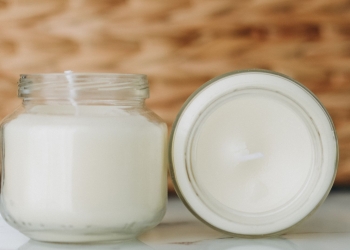In ancient times, smoking wasn’t just a habit; it was a ritual, a tradition, a way to connect with the divine and with nature. Herbal smoking blends were crafted with intention, knowledge, and respect for the plants used. These blends were integral to various cultures worldwide, each with its own unique recipes and purposes. Let’s delve into the fascinating world of ancestral smoking and the herbal blends that have stood the test of time.
The Roots of Herbal Smoking
Historical Significance
– Native American Tribes: For many Native American tribes, smoking herbs like tobacco, sage, and sweetgrass was part of sacred ceremonies. These rituals were believed to purify the spirit, ward off evil spirits, and bring blessings.
– Ancient Egyptians: The Egyptians used a variety of herbs in their smoking blends, often for medicinal purposes. They believed that the smoke from these herbs could cure ailments and enhance spiritual experiences.
– Asian Cultures: In China and India, smoking herbs was often associated with medicinal practices. Ayurvedic medicine, for example, incorporated herbal smoking blends to treat respiratory issues and improve mental clarity.
Medicinal Uses
– Healing Practices: Herbal smoking was often employed in traditional healing practices. The smoke from certain herbs was believed to have therapeutic properties, aiding in respiratory issues, calming the mind, and even detoxifying the body.
– Spiritual and Ritualistic Uses: Beyond physical healing, smoking herbs played a crucial role in spiritual and ritualistic practices. They were used in ceremonies to connect with ancestors, deities, and nature spirits.
Common Herbs Used in Ancestral Blends
Tobacco
– Sacred and Powerful: Tobacco was revered in many cultures for its powerful spiritual properties. It was often the main ingredient in ceremonial blends, believed to carry prayers to the spirits.
– Medicinal Benefits: Apart from its spiritual significance, tobacco was also used for its medicinal properties, such as treating pain and respiratory issues.
Sage
– Purification: Sage is widely known for its purifying properties. Burning sage in smudging rituals was believed to cleanse spaces and individuals of negative energies.
– Healing: Sage smoke was also used for its antibacterial properties, helping to cleanse the air and treat respiratory ailments.
Mugwort
– Dream Enhancement: Mugwort was prized for its ability to enhance dreams and facilitate lucid dreaming. It was often smoked before bed to induce vivid, meaningful dreams.
– Spiritual Connection: Mugwort was used to deepen spiritual connections and enhance psychic abilities.
Lavender
– Calming and Soothing: Lavender was a popular addition to herbal smoking blends for its calming effects. It helped to reduce stress and anxiety, promoting a sense of relaxation and peace.
– Medicinal Uses: Lavender was also used to treat headaches, insomnia, and other stress-related ailments.
Other Notable Herbs
– Damiana: Used for its aphrodisiac properties and to enhance mood.
– Peppermint: Known for its invigorating and refreshing effects.
– Rose Petals: Added for their sweet aroma and calming effects.
Crafting Your Own Herbal Smoking Blends
Understanding the Herbs
– Research: Before crafting your own blend, it’s essential to understand the properties of each herb. Research their effects, both medicinal and spiritual, to create a blend that suits your needs.
– Quality: Use high-quality, organic herbs to ensure the best effects and avoid harmful additives.
Blending Techniques
– Balance: Create a balanced blend by mixing herbs with complementary properties. For instance, combine calming herbs like lavender with invigorating herbs like peppermint.
– Ratios: Start with small amounts and adjust the ratios according to your preference. A common ratio is two parts base herb (like mullein) to one part secondary herbs (like lavender and mugwort).
Ritual and Intent
– Set Your Intent: Approach the process with a clear intention. Whether for meditation, relaxation, or spiritual connection, setting an intention enhances the experience.
– Respect and Gratitude: Show respect for the herbs and gratitude for their benefits. This mindful approach aligns with the traditions of ancestral smoking.
Modern Revival of Ancestral Practices
Increasing Popularity
– Holistic Health: With a growing interest in holistic health, many people are turning to herbal smoking blends as natural alternatives to tobacco and recreational drugs.
– Mindfulness and Ritual: The practice of mindful smoking, rooted in ancient traditions, is gaining traction as a way to slow down, connect with oneself, and honor the natural world.
Ethical Considerations
– Sustainable Sourcing: Ensure that the herbs used are sustainably sourced to protect natural habitats and respect traditional practices.
– Cultural Sensitivity: Be mindful of the cultural significance of certain herbs and practices. Approach ancestral smoking with respect and awareness.
Herbal smoking blends of old offer a rich tapestry of history, tradition, and healing, different to the modern day vape. By understanding and respecting these ancient practices, we can revive and incorporate their benefits into our modern lives.







